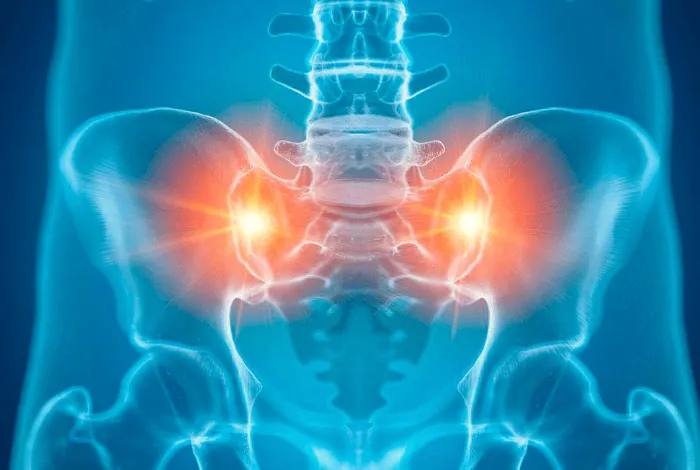Sacroiliac Joint Fusion

Sacroiliac Joint Fusion in McKinney TX is a minimally invasive procedure in which the surgeon places small plates and screws in the Sacroiliac joint to fuse the bones. The SI joint pain treatment is effective in reducing pain and instability caused by inflammation or dysfunction in your sacroiliac joint. Most often, doctors prescribe conservative treatments to patients, which include pain medications, injections, chiropractic manipulation, and physical therapy. However, when these treatments fail, your doctor will prescribe Sacroiliac Joint Fusion in McKinney TX as a last resort.
Benefits Of Sacroiliac Joint Fusion In McKinney TX
Our qualified surgeons at the Minimally Invasive Neurosurgery of Texas will indicate the sacroiliac joint fusion in the following cases.
Low Back Pain
Pain in the low back, groin, or hip often makes it difficult for the patient to carry out daily life activities. When the conservative treatments do not solve the problem, and your symptoms get worse, the surgeon will undergo sacroiliac joint fusion. You can feel pain on one or both sides of your body. One-sided low back pain indicates that your sacroiliac joint is causing the pain, which confines to the pelvis and low back. It may also radiate down to the leg and cause sciatica.
Pelvis Instability
Lower back or pelvis instability can also cause difficulty or pain when standing or walking. The feeling of pain becomes more severe when you climb stairs or walk up an incline. Conservative treatment options take a long time to fix this issue. Sometimes, the problem is severe enough that it requires the patient to undergo Sacroiliac joint fusion.
Limited Mobility
Limited mobility of stiffness in legs, groin, hips, and low back can also cause severe pain in your body. To overcome the problem of stiffness, our surgeon may recommend sacroiliac joint fusion. Sacroiliac Joint Fusion in McKinney TX is an elective procedure, which means it your decision to have surgery. Our surgeons consider various factors when deciding to perform this minimally invasive surgery. The first factor is always the failure of conservative treatments. Fusion surgery improves your quality of life and allows for a quicker recovery process after the procedure. Our surgeons typically recommend trials of non-surgical treatments for at least 8-12 weeks before suggesting surgery.
How Sacroiliac Joint Fusion Is Performed
In a Sacroiliac Joint Fusion in McKinney TX, the surgeon grafts one or both sides of your sacrum to the ilium. The purpose of the SI joint pain treatment is to encourage the growth of bone across the joint. Fusion occurs following the surgery during the process of healing. It is due to the use of a bone graft or implanted instrumentation. A minimally invasive procedure is a standard method of sacroiliac joint fusion. The surgeon performs the process by making a small incision in the buttock of the patient. Experts do not recommend open sacroiliac joint fusion surgery because it has a great healing time. The higher complication rates of open fusion surgery are the reason surgeons at the Minimally Invasive Neurosurgery of Texas recommend SI joint pain treatment.
How Sacroiliac Joint Fusion Is Performed
Researchers have developed implant systems for sacroiliac joint fusion, which allows the surgeons to perform the minimally invasive procedure. The implant systems can relieve excessive motion at the sacroiliac joint through fusion. It minimizes lower back and pelvic pain. Likewise, the procedure does not cause complications and has a faster recovery process. The Sacroiliac Joint Fusion surgery involves the following steps.
Step 1:
The patient lays face down or prone on the operating table under anesthesia.
Step 2:
The surgeon makes a small incision of 2-3cm in the side of the buttock.
Step 3:
The surgeon dissects the gluteal muscles to reach the ilium.
Step 4:
A small hole is created to insert a guide pin through the side of the ilium. The surgeon drills or broaches the opening through the ilium to reach the sacrum. Then, the surgeon inserts the implants.
Step 5:
The surgeon clears the SI joint of soft tissues and cartilage if the insertion of a bone graft is necessary. Then, the surgeon packs the bone graft into the joint space.
Step 6:
The surgeon inserts the implant instruments through the passage using pins, screws, and mallets.
Step 7:
The site of incision is irrigated using a saline solution. It removes any impurities and debris from the wound before the surgeon closes it. Standard sutures are used to close the incision in layers. Here, at the Minimally Invasive Neurosurgery of Texas, our surgeons are qualified, licensed, and experienced to perform Sacroiliac Joint Fusion in McKinney TX. Contact us today!
Book An Appointment Now!
Working Hours
Business Hours :
8AM to 5PM - Monday to Friday
Closed - Saturday and Sunday
Phone Number
Call Us :972 366 6655
Email Us : [email protected]



